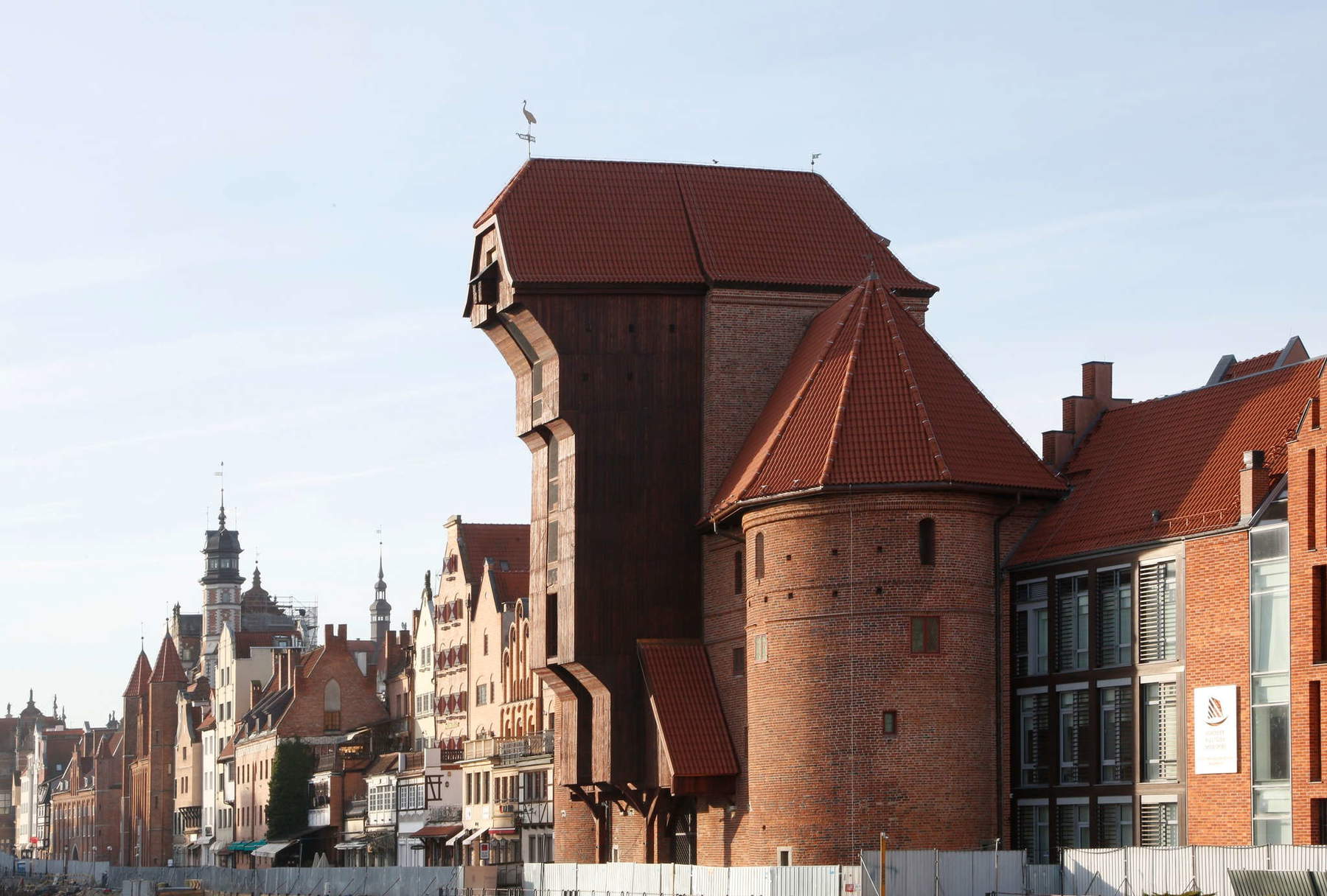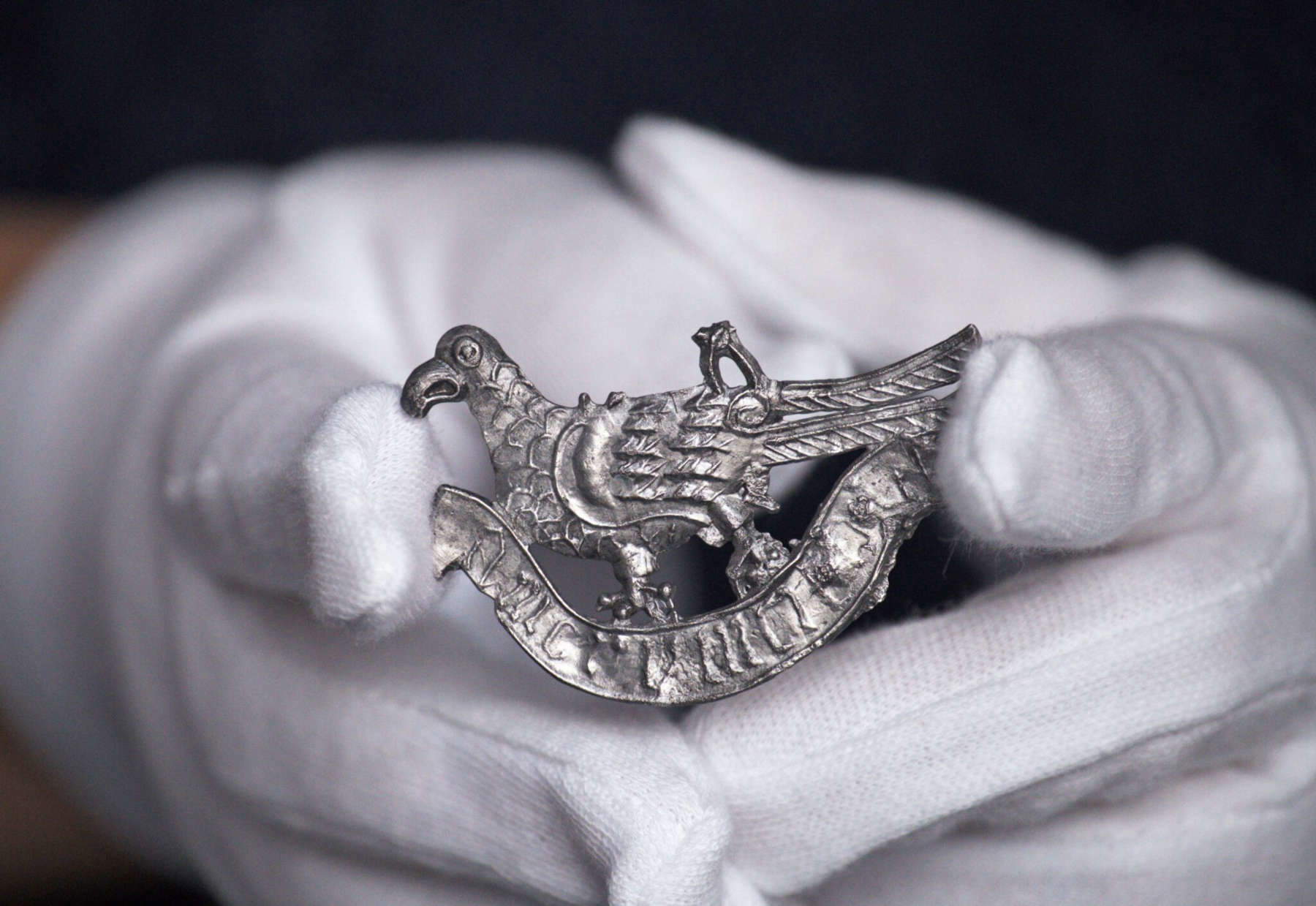A construction site that unexpectedly reveals ... love! That’s what happened in recent days in Gdansk, Poland, where archaeologists from the Narodowe Muzeum Morskie, the National Maritime Museum, in the course of restoration work on the Gdansk Crane, a symbol of the Polish city (it is the 15th-century old wooden crane, known as the “Zuraw” in Polish, a masterpiece of 15th-century engineering and the city’s most visited monument: until the 1940s it was still in use, then it was extensively damaged during World War II, and rebuilt between the 1950s and 1960s), they discovered a tin turtledove engraved with the Latin inscription Amor vincit omnia, the “love conquers all,” taken from verse 69 of Virgil’s Egloga X (“Love conquers all, and we yield to love”).
The small artifact dates back to the 14th-15th centuries, and bears traces of two holes through which it could be hung on a chain or attached to clothing. The use of these decorations by the medieval inhabitants of Gdansk is evidenced by the numerous finds known from the city: the fashion for badges with love phrases reached Gdansk from Western Europe, as evidenced by the significant number of this type of pendants discovered in cities in the Netherlands and England in the 14th-15th centuries. Nothing forbids fantasizing that it was, perhaps, a token of love left by some sailor in transit from the port of Gdansk, located on the Baltic Sea coast, to a woman he met in the city.


The bird depicted on the feat, a turtle dove, is quite similar to the pigeon seen in any city, but compared to its urban “cousin,” the turtle dove has more diverse colors and a characteristic metallic sheen. Because these birds often form permanent pairs, in many cultural traditions the turtle dove is a symbol of fidelity and eternal love. Their loyalty and protection to their partner and offspring make them the perfect symbol of love and family. Thus, the turtledove’s unique appearance, distinctive plumage and small size have made it a subject of interest in art and literature. The turtledove motif has been used by, among others: William Shakespeare in the play King Henry VI, where people are described as “turtledoves in love, inseparable day and night.”
What will happen to this finding? For sure, Anna Rembisz-Lubjejwska of the National Maritime Museum (which manages the Crane) lets us know, the find will add to an exhibition to be mounted inside the Gdansk Crane, adding yet another element to the city’s rich history and culture. In fact, this is not the only object found during restoration work on the oldest preserved harbor crane in Europe. The renovation and modernization of the crane is scheduled to be completed by April 30, 2024.
 |
| Gdansk, ancient token of love discovered: a 14th-15th century turtledove |
Warning: the translation into English of the original Italian article was created using automatic tools. We undertake to review all articles, but we do not guarantee the total absence of inaccuracies in the translation due to the program. You can find the original by clicking on the ITA button. If you find any mistake,please contact us.